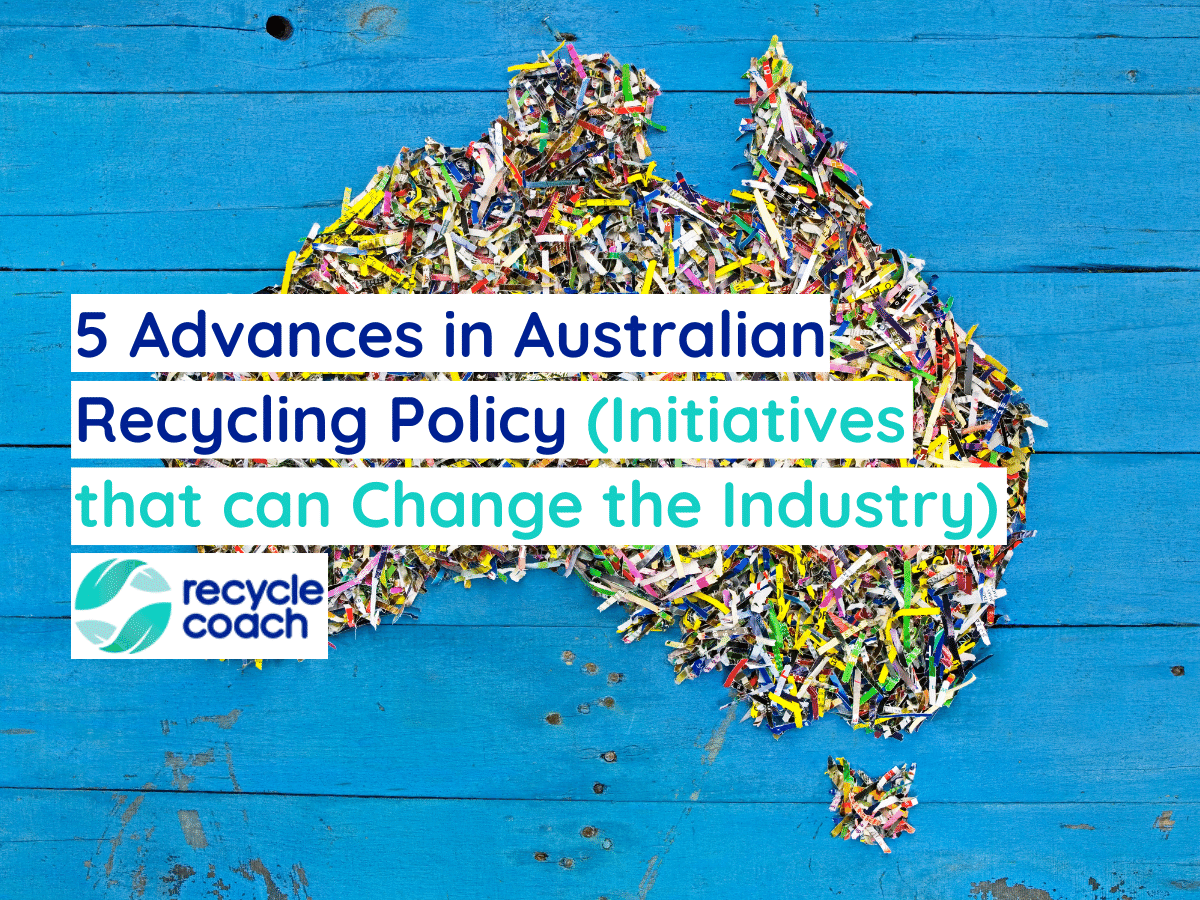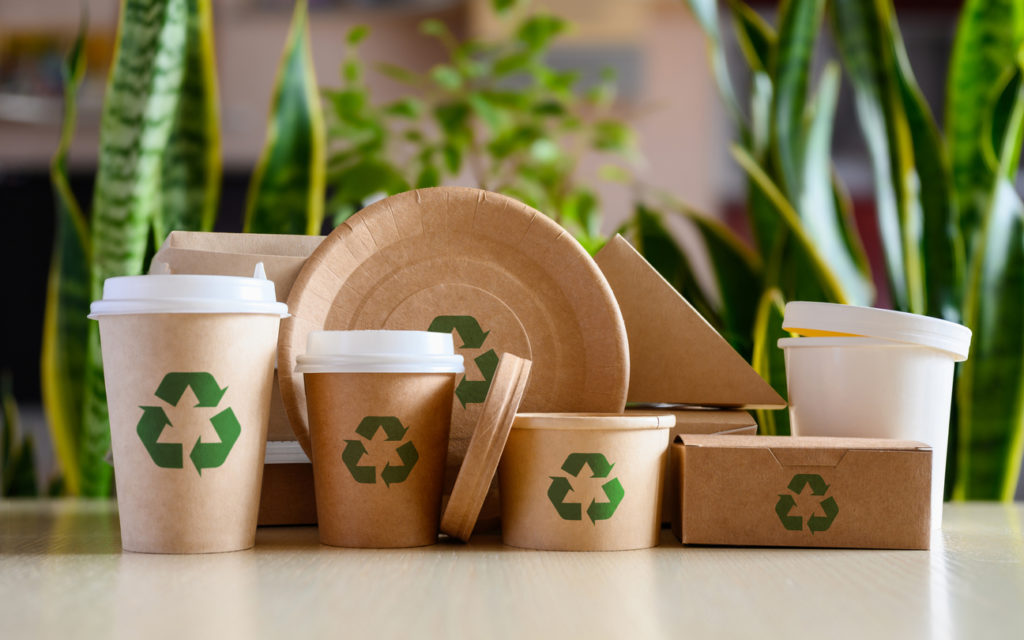5 Advances in Australian Recycling Policy (Initiatives that can Change the Industry)

The Australian recycling industry has gone through the same struggles as many other countries in the recent past as China changed what they accept for recycling in 2018 and as Covid-19 hit in 2020. These two factors have increased the need to make sweeping changes to the entire waste and recycling industry worldwide.
In Australia, this need for change is often referred to as the “war on waste.” Taking care of the overabundance of waste that was now forced to stay on the continent, has led to some major innovations and initiatives in the infrastructure of Australian recycling.
#1: Investment from the Government

With any infrastructure advancement, the government is needs to be a leading source of change. The Australian Government has stepped up to solve the war on waste, as they refer to it, by initiating the Recycling Modernisation Fund (RMF). This fund will consist of $800 million of recycling investment sourced from industry, states, territories, and the Australian Government.
This investment will nearly double the amount of plastic Australia is able to process for recycling. Throughout 2020-2021, the capacity for domestic plastic reprocessing was around 227,000 tonnes annually. With the investments and government regulations coming into place, there is an expectation that Australian recycling reach at least 420,000 tonnes annually by 2025.
This year Australia opened the nation’s largest PET recycling plant. It is estimated to recycle approximately one billion plastic bottles per year. Investments in industry innovations such as this will help revitalize recycling facilities across the country.
The continued investment in waste collection and kerbside recycling will continue to show significant progress in Australia’s war on waste.
#2: Domestic Manufacturing

With these large investments in recycling, there must be innovation in sustainable manufacturing that remanufactures processed materials from recycling. The effects of the China ban and Covid-19 have highlighted the need for less reliance on transporting manufactured goods and services from outside of Australia due to high shipping costs, both financial and environmental.
Increasing the manufacturing of products within Australia can help boost Australia’s economic sovereignty. By using recycled products that are reprocessed from material recovery facilities (MRFs), Australian manufactures can help invigorate product stewardship.
One aspect of product stewardship encourages manufactures to use less virgin materials and more recycled content in their products and packaging. As part of the changes in regulations to Australian recycling, typically difficult to recycle plastics are expected to be remanufactured as opposed to incinerated for energy recovery. This goal is set to reinvigorate the manufacturing sector in Australia.
#3: Limited Waste Exports

Where only 9.4% of overall plastic waste was being recycled, Australia has implemented strict government standards in waste management that ensures they will meet their goal of recycling 70% of annual plastic waste by 2025. Australian plastic packaging recycling alone is currently at 20.6% so there will have to be about a 400% increase in plastic packaging recycling to reach that goal.
Australian recycling regulations have significantly reduced what can and cannot be exported. Now, instead of exporting unprocessed materials, Australia only exports processed waste glass, plastic, tyres and paper. This prevents the loads from contamination and helps Australia take responsibility for their own waste.
There are also strict regulations on who can export these processed materials and how they are able to be exported. Australia is trying to keep as much recycling infrastructure and manufacturing within the country, but as these developments are being implemented, it is still necessary to export some processed materials since the manufacturing capabilities are still developing.
#4: Regulated Packaging Requirements

With plastic packaging projected to double by 2040, swift action has been taken to curb the creation of plastic packaging in order to keep it out of landfills and out of the ocean. By reducing the production of plastic packaging and increasing recyclability of packaging, this will create a closed loop system for a more circular economy.
In 2022, Australia is phasing out several types of plastic packaging, such as non-compostable plastic packaging, loose fill and moulded expanded polystyrene (EPS), and PVC packaging labels. This is all to reach the goal of 100% of packaging being reusable, recyclable, or biodegradable by 2025.
In addition, by 2025 all packaging will be required to to contain around 50% of recycled content (20% for plastic packaging).
These regulations on packaging will be a key contributing factor to reach the Australian recycling goal of making sure that 70% of plastic packaging goes on to be recycled or composted by 2025.
#5: Plastic Bans

In keeping with their lofty recycling and waste reduction goals, the Australian government has set out to ban all single-use plastics by 2025. Australia produces about 2.5 million tonnes of plastic waste per year. Reducing single-use plastic items can significantly reduce this volume.
Across Australia, plastic bags have already been banned in the past few years. Reducing plastic bag waste is an important part of plastic waste reduction as this soft plastic material is usually problematic for recycling facilities. Australia does have a countrywide program for soft plastic recycling through REDcycle, but the low amount of recovered materials and high instances of plastic bag waste that ends up in the oceans and waterways makes a plastic bag ban much more effective in solving the issue.
The next single-use plastic that is set to disappear is plastic cutlery and straws, along with many extended polystyrene (EPS) foam containers. Coffee cups and lids are one of the proposed bans in Western Australia this year as well. States and Territories are scheduling out which bans go into effect at what times, but with the goal of reducing plastic waste nationwide.
Outcome
With so many new regulations and policies enacted within a short period of time, and government support both through policy and funding, Australia recycling is proving to the world that industry change to address waste and recycling issues is possible. Not only is it possible, but it is necessary to combat the rapidly increasing plastic waste production and the need for a circular economy.
There are many moving parts to the changes implemented in Australia, but we are sure to see outstanding improvements and achievements in Australia’s recycling industry in the coming years as their lofty goals for 2025 and beyond come to fruition. Other countries should follow suit in pulling together to create change that will enhance the industry and help save our environment.